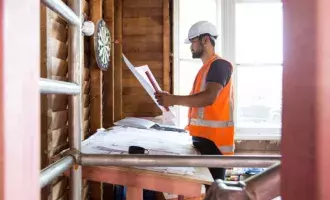The UK public estate is vast, complex and under growing pressure. Leaders across the public sector are being asked to manage ageing buildings, reduce costs, adapt to new models of service delivery and meet ambitious net zero targets - all while navigating tight budgets and rising expectations around performance and value.
Public buildings are no longer passive backdrops to service delivery. They are strategic assets that shape how services are delivered, experienced and sustained. When managed well, they enable transformation. When overlooked, they absorb time, energy and budget. Increasingly, the difference lies in how effectively organisations use data and technology to understand, optimise and plan for the spaces they manage.
The state of the estate
Across the public sector, the pressures may differ, but the underlying drivers are the same. A hospital trust may need to reconfigure clinical space to support new models of care. A local authority might be rethinking how civic buildings support flexible, hybrid working. A defence estate could be focused on boosting agility while managing costs. What unites them all is the growing need to deliver more with less, and digital transformation is central to making that possible.
The UK public estate - worth an estimated £158bn and comprising more than 300,000 properties - has enormous potential. But to realise that value, the public sector must evolve.
Despite spending £26bn annually on digital technology and employing nearly 100,000 digital and data professionals, core public services are still heavily reliant on paper and legacy systems. For example, HMRC fields around 100,000 calls daily, the DVLA processes 45,000 letters a day, and over 500 services at Defra remain paper based. Meanwhile, only 47% of central government and 45% of NHS services currently have a full digital pathway.
To ensure public sector estates operate efficiently and adapt to changing needs, embracing digital tools is no longer optional, it is essential. Across the sector, there are signs of progress. In the emergency services, technology is reducing the need for fixed bases, while public interactions with services such as policing are increasingly digital first.
But modernising the public estate goes beyond frontline service delivery. It starts with how we understand and manage the buildings themselves, and that begins with data.
A data-driven approach to decision making
Whether managing a hospital, a council building, or a care facility, the ability to make decisions based on accurate, real-time data is now fundamental. A data-led approach helps leaders understand how buildings are used, where savings can be made, and how services can be delivered more effectively.
Integrated Workplace Management Systems (IWMS), Building Management Systems (BMS), and cloud-based asset platforms are helping public sector organisations maintain live asset registers, monitor performance, improve compliance, and optimise space. These systems are critical for reducing operational costs, mitigating risk, and informing long-term investment strategies.
At Capita, we’re helping over 450 schools and 200 corporate buildings to manage statutory compliance through a centralised asset portal that consolidates service records, certification data, and maintenance activity in one place.
In the NHS, the Open Space programme is transforming how rooms and facilities are used. Infrared sensors and real-time tracking provide accurate data on space utilisation, helping local teams reallocate underused areas. During Covid-19, this agility enabled rapid repurposing of underused space for vaccinations, testing, and additional treatment rooms. The new NHS Connect platform also makes it easier to log facilities issues and raise queries, while also capturing data on recurring problems. By identifying trends early, teams can resolve issues faster and plan more effectively. As estates become more data-enabled, the opportunity to drive environmental performance and support sustainability goals becomes clearer.
Sustainability and decarbonisation
Achieving ambitious green targets is no small undertaking. However, as the largest landowner in the UK, the public sector has a significant responsibility to meet its net zero goals by driving reductions in emissions and improving resource efficiency. Implementing sustainable practices, such as using renewable energy sources and smart technology, can achieve this.
One example of this in action comes from the education sector. In partnership with the Creative Learning Partnership Trust, Capita Entrust helped align energy usage across eight academies with actual demand. By enabling staff to monitor their own buildings and make informed decisions, the trust saved over £1,000 per weekend in energy costs at one school alone. Energy budgeting support and data transparency empowered local teams and drove measurable change. It’s evident that when people understand how their buildings behave, they can manage them more sustainably. And increasingly, that understanding comes from smart technology.
Embracing smart technology
Smart building technology is no longer the preserve of commercial portfolios, it’s fast becoming essential infrastructure for public sector estates. IoT (Internet of Things) sensors now allow estate managers to monitor environmental factors such as temperature, CO2, humidity, occupancy, and light levels in real time. This enables proactive maintenance, energy optimisation, and improved comfort for occupants - all while collecting valuable data to inform long-term planning.
In East Renfrewshire, we worked with the local council to roll out NDIR sensors in every classroom, providing real-time data on air quality, temperature and humidity. The result was a safer, healthier learning environment aligned with Scottish Government air quality guidelines. Moreover, it was all managed via digital dashboards without disrupting teaching activities.
In the care sector, we helped Serene Care’s Stoneyford facility install smart sensors to monitor environmental quality around the clock. Our team analysed the data and provided tailored interventions to improve resident wellbeing, reduce energy usage, and support the care team with actionable insights - all contributing to a safer, greener, and more efficient home.
The promise of AI
Artificial Intelligence is rapidly becoming a valuable tool in estates management, planning and health. In the built environment, AI models can forecast asset failures, optimise maintenance schedules, and automatically manage ventilation and lighting systems to cut waste and improve indoor conditions. In planning departments, AI is being used to automate routine tasks such as document reviews and data extraction, speeding up processes and freeing up planners to focus on more strategic decisions. This technology does not replace human expertise, it extends it, acting as an “extra pair of hands” in a pressured environment.
Meanwhile in healthcare, AI is helping clinicians assess x-rays, brain scans and diagnostics faster. This enables earlier treatment, better outcomes, and freeing up time for frontline staff to spend with patients. It’s also a key enabler in supporting virtual wards, allowing patients to receive care at home with safety and oversight.
Building Information Modelling
As estates become more complex, the need for a single, reliable view of buildings grows. Building Information Modelling (BIM) provides that clarity, bringing together design, maintenance, and performance data into one accessible digital model.
For organisations managing large or ageing estates, this means better planning, smoother refurbishments, and smarter decisions across the asset lifecycle. It’s a practical tool helping public sector teams reduce risk, improve collaboration, and make every pound of investment go further.
Digital estates that deliver for people and place
Digital transformation of the public estate is already underway, but unevenly. Fragmented systems, legacy infrastructure, and skills gaps remain real challenges. Yet so do the opportunities.
With the right tools, partnerships, and strategies, estates can become powerful enablers of better public services, from schools that cost less to heat, to care homes that are safer and more comfortable, to hospitals that flex their space as demand changes.
At Capita, we’re helping organisations across the public sector to plan, manage, and transform their estates through smarter use of data and digital tools – enabling safer, greener, and more adaptable buildings for the future.
To find out how we can help you execute your digital transformation goals, contact our team today:

Darren Howe
Portfolio Strategy and Propositions Director, Capita
Darren has over 30 years’ experience working for UK Public Services delivering solutions that create better outcomes. Darren has worked on various property, place and net zero programmes and most recently led the use of Smart Buildings technology to address some our customers biggest challenges – improving energy efficiency, creating data led pathways to net zero, and improving the wellbeing of people in buildings.







